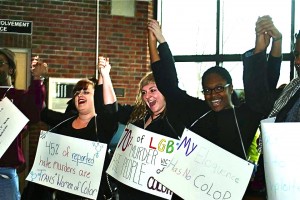
By Spenser Hickey
Assistant Copy Editor
and Audrey Bell
Transcript Correspondent
The Event
On Feb. 20, many students entering Hamilton-Williams Campus Center shortly before noon noticed that several of the couches and chairs that normally filled the atrium were missing.
Some also noticed the table set up to the right of the door, where a growing group of students all dressed in black gathered to pick up signs.
As the students in the atrium would quickly learn, this was the first stage of a collaborative demonstration by Sisters United, along with the Student Union on Black Awareness, OWU Freethinkers, VIVA LatinoAmerica, PRIDE, and Black Men of the Future.
The demonstration was designed to educate the community on the realities of ongoing discrimination and racism, homophobia, white privilege and stereotyping, both in America and at Ohio Wesleyan.
“The main goal was to put racial issues essentially in the forefront of everyone’s mind,” said junior Madeleine Leader, SU vice president, chief financial officer of Freethinkers, and a member of SUBA. “For the majority of people on this campus, race is not something that they discuss, have issues with, or even come into a negative contact with, on any sort of basis. They walk around oblivious to the racial issues, so that’s what we wanted to accomplish—demystifying stereotypes, because it is Black History Month.”
Sophomore Mariah Powell, SU president, also stressed the importance of demystifying stereotypes.
“Once they have the stereotype, they put everyone into this big group, this big bubble, so we just wanted to break that,” said Powell.
There were between 25 and 30 demonstrators in total; other organizers ran a table during the event. Many, like Leader, were members of multiple clubs collaborating in the event.
BMF and PRIDE had four members involved, VIVA had five, Freethinkers two and SUBA nine. SU had 13 members present, including six officers.
Sophomore Jenn Coleman, SU treasurer, and junior Nola Johnson, socio-cultural chair, did tabling while president Mariah Powell and historian Meredith Harrison, both sophomores, held signs, as did Leader and freshman Ellen Hughes, secretary.
Hughes said the participation of white, Latino and Indian students in addition to African-Americans was “great” and showed “a lot of different stereotypes on race that weren’t just for black history.”
Originally, the demonstrators were supposed to remain silent, but many spoke up when asked questions by fellow students.
The event was deliberately planned to surprise the students who normally gather in the atrium, and details were kept tightly secret until it began.
Word did get out that SU members were to wear all black and would have signs involving stereotypes, but other than that no other information was given.
A slide show providing basic details about who was involved in the event began playing on the atrium television set, but even a desk worker for the Student Involvement Office, normally in charge of the atrium television, was confused about what would happen.
When asked about the event beforehand, Leader would only say to be in the HWCC at noon Wednesday, and that members of SU would not answer questions until after the 6 p.m. discussion.
“At least in my experience at this campus, whenever people hear that there’s going to be some sort of presentation having to do with race, somehow everyone leaves Ham-Wil (HWCC),” Leader said. “If you guys aren’t going to come to our event, we’re going to bring our event to you and you’re going to deal with our presence. We’re not going to be silent; this is going to be something that you’re going to think about.”
Hughes said people leave events when they find out they’re about race issues.
“Race is really hard to look in the face and recognize and maybe you take part in it accidentally and don’t mean to,” she said. “I think a lot of people try to ignore that, because they don’t want to be told they partake in something like that…We brought it to them, so they had to pay attention.”
Johnson offered another reason for the surprise, however.
“(Racial, sexual, and religious minorities) don’t announce our invisibility…we just walk throughout life and we’re invisible, so that’s why we didn’t give people pre-warning,” she said.
The signs they carried
The signs the demonstrators held varied—there were debunked stereotypes, messages challenging the audience and statistics on LGBT members of racial minority groups, held by members of PRIDE.
After getting their signs, the demonstrators took up places throughout HWCC. Many stood in the atrium or the long hallway leading toward the Food Court; others were in the Food Court and Bishop Café or outside the mailroom.
Powell credited the event’s success to the number of demonstrators and their ability to fill the center.
“We were everywhere, so you had to see at least one stereotype,” she said.
She said some students told the demonstrators about stereotypes they’d heard but didn’t consider true.
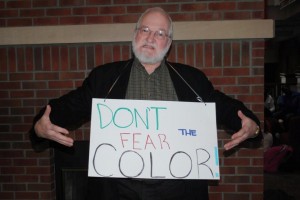
Powell’s sign read, “Why do I have to be a pretty black girl? Why can’t I just be a pretty girl?”
She said it came from the annoyance of routinely having her race used as a description of her appearance.
The signs’ slogans came from “personal preference, any stereotype that either hit home or had to do with you in any way, that was the one you were supposed to demystify,” Powell said. “So it was basically whatever you felt – I know some people talked about where people think they live or where they actually live.”
Examples of this included sophomore Garrison Davis’ sign “We’re not all from ‘the hood’” and freshman JaMilla Holland’s sign, “No, you won’t get shot in my home neighborhood.”
African-American stereotypes weren’t the only ones challenged by the demonstration. Freshmen Bhuneshwar Arjune and Krishna Arjune’s signs challenged Indian stereotypes, while Hughes’ sign challenged the Southern racist stereotype.
Bhuneshwar’s sign read, “Yes I am Indian, but I was born in South America,” Krishna’s sign said, “Yes I’m Indian, but I do not have an accent,” and Hughes’ sign said, “Just cause I’m from Georgia does not mean I’m racist y’all.”
The signs held by Leader and seniors Glenn Skiles of SU and Katie Pappenhagen of the Women’s Resource Center all challenged students to acknowledge the white savior complex and white privilege.
Pappenhagen’s sign read, “I’m aware of my privilege. Are you?” Skiles’ sign said, “I’m white but I’m not here to save you.”
Leader’s featured a quote from Teju Cole, a Nigerian-American writer: “The White Savior Industrial Complex is not about justice. It is about having a big emotional experience that validates privilege.”
Skiles said her sign was related to Leader’s, but focused more on the effects of imperialism rather than the current “white savior” belief.
“I was particularly thinking of missionaries, not even just into Africa but everywhere,” she said.
Sophomore Shakira Braxton, SUBA president and a member of SU, held a sign reading, “Color blindness is not the answer.”
“In this society, and on this campus… people say, ‘I’m color blind’ as if that is the ultimate way to see race, see everyone, when no, we should see everyone as different and accept that,” Braxton said.
Powell said a sign held by freshman Devonta Oden, created by Braxton, “put the cap on the whole event”—it read, “My culture is not for your exploitation.”
“It didn’t say black culture, it didn’t say Hispanic culture; it just said my culture,” Powell said.
“That was the pinpoint of the whole entire event.”
“I think this demonstration was important not just for minority students, but also for those in the majority,” Leader said.
They described several stereotypes they’ve seen on campus, particularly ones surrounding the House of Black Culture, of which they will be a resident next year.
They said many white students feel threatened by the prospect of going there, and don’t think the House is open to white students. Leader said the issue “is a micro-example of a macro-problem” concerning minority neighborhoods.
“In fact, the black community on this campus is one of the most welcoming and inviting,” they said. “We were sick of defending ourselves and just wanted to come out strong as one and say, ‘This is who we are, this is what we’re not.’”
Sophomore Jenn Coleman, SU treasurer, said the goal was to raise awareness of racial inequalities and issues on campus.
“We want to feel that there’s not a race issue, but there obviously is,” she said. “There’s a huge security blanket around our campus, and people think that things that happen outside of Delaware don’t also affect our campus, and vice-versa, and I think having this event will help people start thinking about these things.”
Sophomore Meredith Harrison, SU historian, said as a member of the white community she’s more exposed to racism than those in minority communities are, and that groups in HWCC or Beeghly Library are often segregated along racial lines.
“This issue is especially important to me because I do believe that I recognize my privilege as a white student,” she said.
“…I am just sick and tired of hearing and seeing things happen to black students on campus, and specifically my black friends on this campus…Just because I’m not a racial minority doesn’t mean it doesn’t offend me.”
Meredith said she feels white students should “use (their) privilege to end racism within (their) own community.”
“We can start by being integrated more, and I feel like a lot of white students on this campus don’t recognize their privilege, and think that racism isn’t a problem,” she said. “But it is, because I see it in all these programs that we have on campus. I see it every day. People need to wake up.”
Johnson said many students think “‘racism doesn’t happen on this campus,’” and that many movements on campus leave out African-American students and say afterwards they didn’t realize it.
“I say to them, how can you not realize that?” she said. “How can you not see that around you—there’s nobody else represented but the people who look like you? And it’s because they don’t have to deal with it.”
Hughes said in an email she took part to demystify stereotypes, and because it’s not fair “for anyone to prematurely judge another person.”
“My sign said, ‘Just ‘cause I’m from Georgia does not mean I’m racist, y’all,’ because I wanted to show that not all southerners are confederates,” Hughes said.
Skiles said she wasn’t very active within SU, but decided to take part after seeing her friends rehearsing for the demonstration the night before.
“A big part of race issues have to do with a lack of relationships,” she said. “There’s a lot of value in this for shocking the majority students, but also I feel like my life is enriched by the fact that I’m not racist, and that I try to acknowledge my privilege. I think other people’s lives would be enriched if they did the same.”
The audience reacts
After standing in place holding the signs for several minutes, the demonstrators gathered together in the Atrium again, formed a line and marched through HWCC. They entered the Faculty-Staff Dining Room and Bishop Café, and circled the entrance to the Food Court.
Powell said while they were in the Faculty Dining Room, many faculty and staff members, including “a lot” of white faculty, told her they were glad to see the demonstration.
She said they could have gotten more audience participation had the event been publicized, but they didn’t want “a lot of people to know and then avoid the campus center that day.”
When asked about students asking demonstrators questions regarding their signs, Leader said in an email they thought students of all colors were asking questions.
They said demonstrators were instructed to direct questions to the event table, staffed by Coleman, Johnson and senior Ashley Madera, a member of VIVA.
“I thought that was really interesting and great that people felt comfortable enough to ask us about our demonstration,” Johnson said.
Students and university staff members also took the opportunity after the demonstration to write their own messages on a whiteboard and have a photo taken by SU members.
Senior Karli Amstadt was one of the students who wrote their own message, which said, “I’m a future teacher. I’m sick of this oppressive education system!”
Amstadt said in an email that she took part because “many people see racism as something that isn’t a problem in their own communities.
“I think events like these can create a dialogue on racial issues and hopefully there will be an environment on campus where we can break down the taboos and just talk about race honestly and openly,” she said.
Johnson said some people reacted negatively to the demonstration.
“I did hear people, when (demonstrators) were walking through—they were just like, ‘Really?’” she said. “Someone said, ‘Like we really want to see this right now,’ and I’m like, ‘Like we really want to live this life, all the time.’”
Student reactions polled during and after the demonstration were mixed. Sophomore Margaux Erilane said the signs made her “uncomfortable”; sophomore Sarah Stachowiak said it was “creepy.”
Sophomore Mike Serbianiou said he thought the demonstrators were voicing their concerns, that everyone was equal. Sophomore Ashkan Ekhtera said he thought the event was about “less legal issues, more about social issues.”
Senior Tori Veach said a couple of the signs, particularly one on transgender Americans, were “thought-provoking” and “intriguing.”
Sophomore Susannah Cleland said she didn’t get to read all the signs, but thought the event was “interesting.”
Junior Nora Anderson expressed support for the demonstrators.
“Race privilege still exists,” she said. “Racism is still here. It is institutionalized. We need to see how racism affects everyone in order to change it. It is a part of our culture, and it is a problem for everyone.”
Sophomore Kyle Simon said the event achieved “greater impact” by being a surprise.
“The issue they’re demonstrating for is such an important and controversial one on this campus,” he said. “… A lot of the students, even the more progressive activist ones, don’t necessarily agree that it is a problem when it very clearly is.”
One student, who requested not to be named, said the event made her uncomfortable, as she is from the South and has grandparents she considers racist.
“I guess that’s kind of the point,” she said.
Amstadt said in an email she thought most students were supportive of the demonstration, but she talked to a student who was angered by the event.
“She was still open-minded and willing to talk about it,” Amstadt said.
“We ended up engaging in a really good conversation about what it means to be privileged in today’s society.”
Changing tomorrow
After marching through HWCC, the demonstrators formed a circle in the atrium, held hands, and raised their arms as part of a traditional Harambe chant. Harambe means “coming together” in Swahili, and the chant is used to close SUBA meetings.
They then announced that SU would be hosting a discussion on the demonstration in Crider Lounge at 6 p.m.
Black World Studies professor Chukwuemeka Aniagolu moderated the discussion, which addressed what the event meant, both for demonstrators and bystanders; race relations and racism; general on-campus apathy; and steps they want the administration to take.
There were between 20 and 30 students at the discussion; most of them had been involved in the demonstration.
Leader said while the discussion attendees were many of the same people they’d seen at past events, having Professor Aniagolu added a different perspective to it.
Hughes said while she thought the content of the discussion was good, the lack of new students was “a huge problem.”
“We had a good conversation, but nobody else got anything out of it,” she said. “…That’s so frustrating.”
Hughes did say she thought the demonstration was a success.
“Lots of students appreciated what we were trying to say,” she said in an email. “The secrecy was awesome because it forced students to ask about the demonstration—it forced them to get involved and to interact with the participants.”
Harrison said while she thought the demonstration was a success, she wished they could have reached the whole campus.
“I tried to reach out to my white peers… I was really disappointed by the lack of support I saw, but I do think we did reach people, so that’s always successful, even if it’s just one person, that’s success in my mind,” said.
Harrison said the event showed her what works and doesn’t work and gave her a lot of ideas.
Braxton said she thought the event went “really well,” as the demonstration attracted a lot of attention and the discussion had good attendance from all walks of life.
Senior Gene Sludge, a member of SUBA, said he wished more people would have come to the discussion, regardless of their race.
“If you’re a human being, you should’ve been there,” he said.
Leader said in an email SU was “happy” with the event’s attendance.
“I think we got the point across perfectly with the number of people we had,” they said.
Leader credited leaders of SUBA, VIVA, Freethinkers, the WRC, BMF, and PRIDE for being extremely helpful.
Amstadt said in an email she thought the event helped to “create a dialogue” about race issues.
“Hopefully there will be an environment on campus where we can break down the taboos and just talk about race honestly and openly,” she said.
Johnson said such discussions need to be “more honest.”
“People just want to throw it under the rug and not address the issue head-on and recognize their privilege,” she said.
“Most of the black community, specifically, have come to the realization that not everyone on campus is racist,” she added in an email.
“We understand that have everyone has ignorances, prejudices, etc. But we do get frustrated when we organize/host opportunities for the faculty, students, and staff—the OWU community—to educate and demystify their perceptions and they don’t take them. It hurts us to not see new faces at our events, and we host many of them throughout the year. You don’t have to come to every event, but make yourself go to at least one. Listen to your peers, your friends, they’re waiting for you to listen to them and they want to hear you as well. Race relations is still an issue in society, and on this campus. We must face this issue openly (and) honestly.”
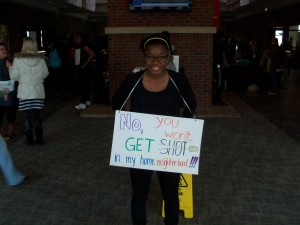
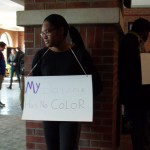
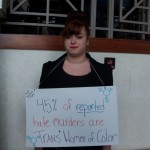
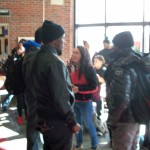
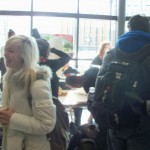
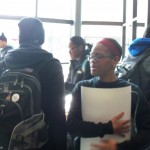
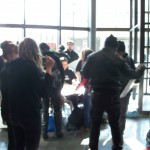
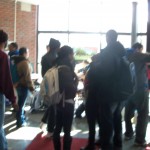
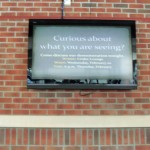
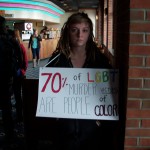
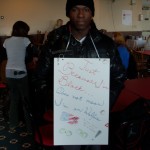
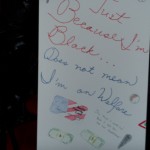

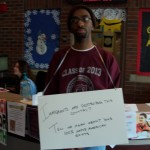
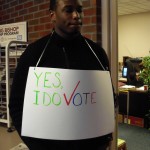
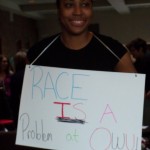
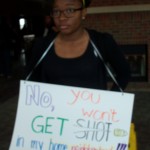
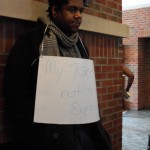
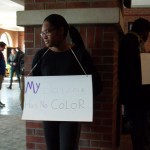
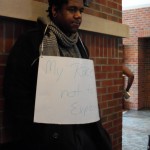
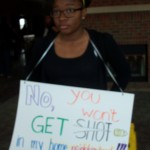
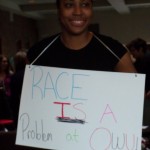
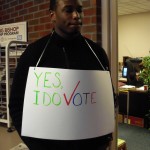
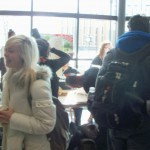
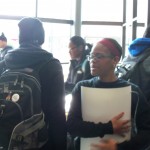
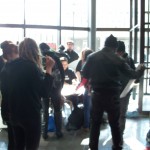
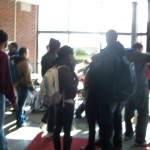
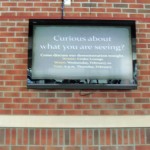
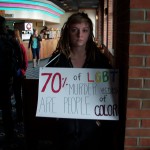
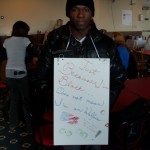
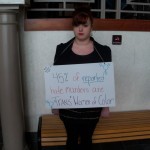
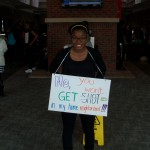
This was a really well written article!! I love that students (and more than just the black students) are starting to take notice and speak out loud about racial issues that our beloved university tends to ignore. GO SU!!!! Good job guys!